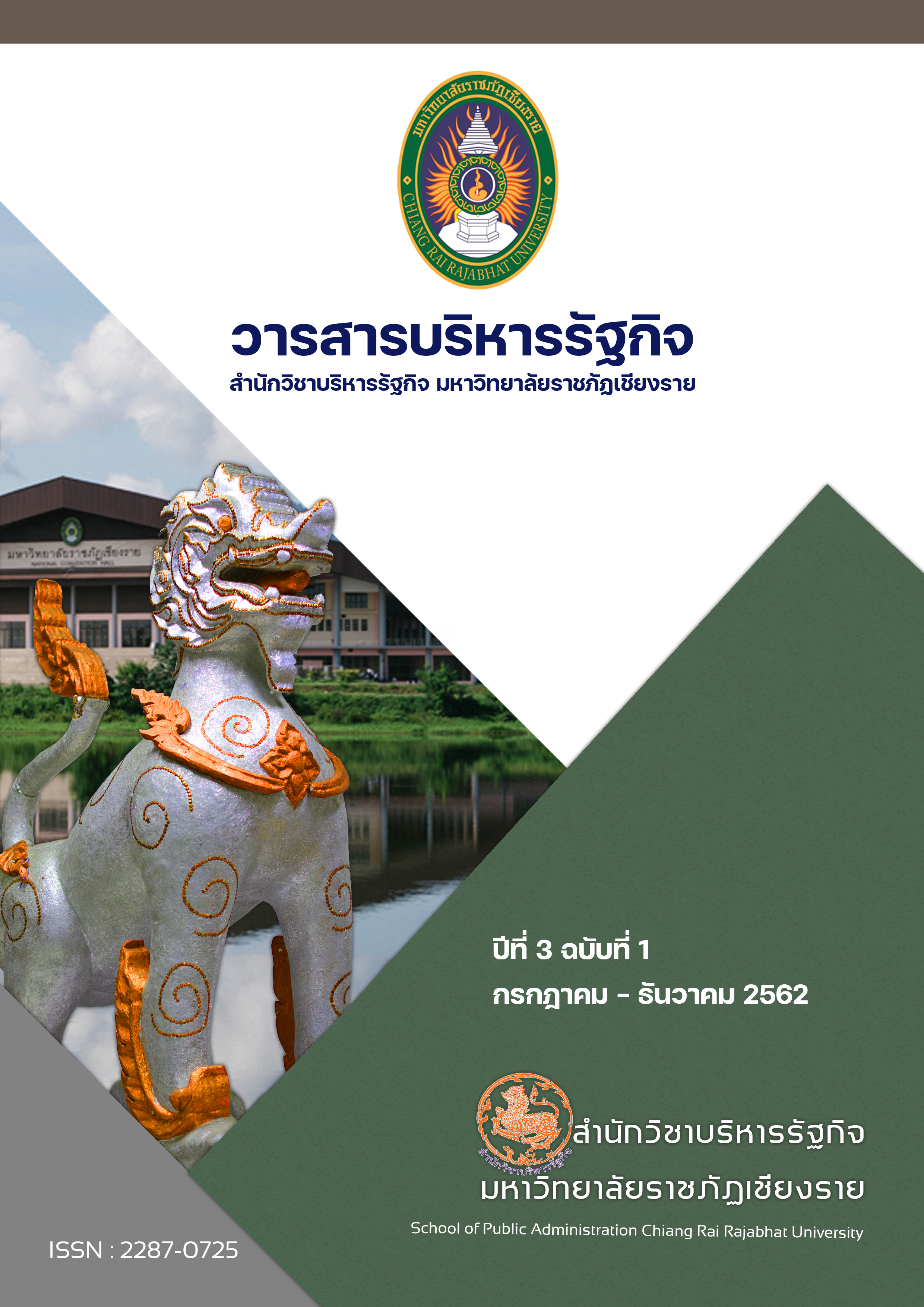THE ROLE OF MICROFINANCE IN PROMOTING QUALITY OF LIFE OF THE POOR HOUSEHOLDS : CASE OF THE TO MONG COMMUNITY FUNDS IN YALA PROVINCE
Main Article Content
Abstract
The purposes of this qualitative research were 1) to explore the roles of microfinance in promoting quality of life of poor households into To Mong community in Yala province. Through To Mong community funds, and 2) to investigate the impacts of local microfinance on financial access, human capital development, and physical capital development an in-depth interview was used for data collection. The target group was 30 poor households selected by using the snow ball sampling and the purposive sampling methods. The peer debriefing and member checking techniques were adopted as an instrument to analyze the data and establish the validity of data. The research findings whereas followings: microfinance played three key roles in development. In terms of financial access, it facilitated access to financial assets and promote quality of life by making their work performances better, their families more peaceful and their daily lives happier than before. In terms of human capital development, it contributed gradually to not only the development of professional and living skills, but also the equality and opportunity for fundamental education. In terms of physical capital development, it enabled those poor households to improve their residential houses [and/or residential buildings] and develop their housings for livestock in order to raise the basic quality of life level.
Article Details
References
AbdullahAl-Mamun, Joseph Adaikalan, Saali Abdul Wahab. (2012). Investigating the Effect of Amanah Ikhtiar Malaysia’sMicrocredit Program onTheir Cliebts Quality of Life in rural Malaysia. Vol. 4, No. 1 (2012). Retrieved from http://www.ccsenet.org/journal/index.php/ijef/article/view/13685/ International Journal of Economics and Finance (IJEF).
Brett E. Colleman. (2006). Microfinance in Northeast Thailand: Who Benefits and How Much?. Retried from World Development Vol.34, No.9 pp. 1612-1638, 2006.
Coleman, James. (1988). Social Capital in the Creation of Human Capital. American. Retrieved from http://www.socialcapitalgateway.org/content/paper/Journal of Sociology. 94 : 95-120.
Hossain, M. (1988). Credit for the Alleviation of Rural Poverty: The Grameen Bank in Bangladesh. Research Report No.55. Retrieved from https://ideas.repec.org/p/fpr/resrep/65.IFPRI,Waschington DC.
Latifee, H.I. (2003). Microfinance and poverty Reduction,International Conference on Poverty Reduction through Microfinance. Taksim-Istambul, Retrieved from https://voa.uitm.edu.my
Kulthida Suwang. (2014). Quality of life Receiving loan Service in community Bank of Krungthai Bank Public Company Limited. Veridian E-Jounal. 7(1): 280-291.
Mark.N. (2012). Sustainable development in ASEAN : The key role of social science and humanities. Journal of Liberal Arts. Prince of songkla University.
Mohamad Zaini Omar, et.al. (2012). The Economic Performance of the Amanah Ikhtiar Malayia Rural Microcredit Orogramme : A case study in Kedah. World Journal of Social Science. 2(5): 286-302.
Pretty, Jules and Rachel Hein. (2000). What is Sustainable Agriculture.Center for Enviroment and Society. Essex, U.K University of Essex. p 7.
Roseberg, R. (2010). Dose Microfinance Really Help the Poor People, CGAP Focus Note. Retrieved from http://www.cgap.org/gm/document-1.9.41443/FN59.pdf
Rahman, S., Rafiq, R.B., & Momen, M.A. (2009). Impact of Microfinance Programs on Higher Income borrowers. Retrieved from https://clutejournals.com/index.php/IBER/article/view/3109/ Bangladesh.International Business&Economics.
Sapovadia, VK. (2006). Microfinance : The pillarsof a tool tosocio-economic development Deverlopment Gateway, Retrieved from http://ssrn.com/abstract=955062
Steel, F., Amin, S., & Naved, R. (1998). The Impact of an Integrated MicroCredit Program on Women’s Empowerment and Fertility Behavior in Rural Bangladesh.
Snodgrass, D. & Sebstad, J. ( 2002) “Clients in Context: The impacts of Microfinance in Three Countries: Synthesis Report.” Report submitted to USAID AssessingtheImpact of microenterprise Services (AIMS).
Swain, R.B. (2006). Microfinance and Women’s Empowerment Evidence from the Self Help Group Bank Linkage Programme in India.
Suwaphan Tanyuwathana. (2018). National Village and urban community Fund office. Retrieved from http://www.villagefund.or.th/post/
Thai official government. (2017). Thai strategy twenty year, Retried from https://www.nesdb.go.th/download/document/.../NS_SumPlanOct2018.pdf
Uotila, A. (2005). Livehood Impact of Microfinance Access for the Poor: The Case of FINCA Rwanda. MPhil Thesis, The University of Guelph, Canada. Retrieved from https://www.jstor.org


